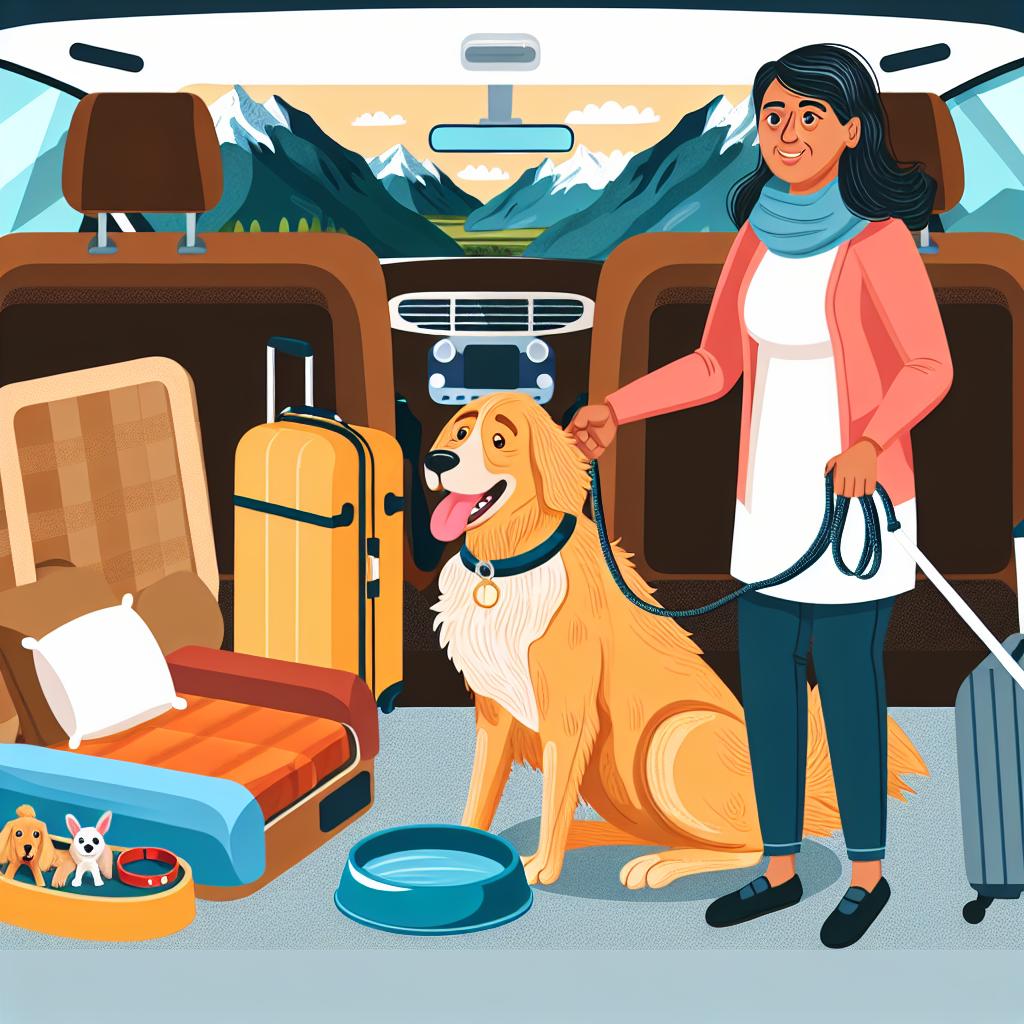
Traveling with a dog can be a rewarding experience, but it requires proper planning. Ensuring your dog is ready for the trip is essential for a smooth journey. To begin with, regular check-ups with a veterinarian are crucial. These visits confirm that your dog is healthy and up-to-date with necessary vaccinations. Furthermore, consider discussing your travel plans with your vet to get advice specifically tailored to your dog’s needs. Your vet may suggest particular adjustments to your pet’s routine or medication to accommodate travel stresses.
The choice of a suitable carrier is another crucial aspect of traveling with your dog. It must be well-ventilated, secure, and comfortable for your dog during travel. The carrier size is particularly important. It should allow enough space for your pet to stand, turn around, and lie down comfortably. This space ensures that your dog does not feel cramped and can change positions as needed. For more insights on selecting the right carrier, visit the American Veterinary Medical Association website.
Documentation is a critical component of your travel checklist, especially if your journey involves international destinations. It is vital to carry all necessary documentation for your dog. This includes proof of vaccinations and a health certificate from your vet. Different airlines and countries have specific requirements regarding pet travel, so it’s essential to check these requirements well in advance of your trip. Proper documentation ensures you can handle any inspections or queries smoothly.
Preparation for the journey involves acclimating your dog to long car rides or the carrier. This should be done long before you commence your trip. You can begin by taking your dog on short practice trips to help them become familiar with the sounds and motion of travel. These practice sessions should be gradual and positive. Reinforcing positive behavior with rewards after each short trip can ease anxiety and help your dog associate travel with enjoyable experiences.
How you manage your dog during the trip significantly impacts their comfort and safety.
A safe and comfortable travel environment inside your car, or whichever mode of transport you choose, is essential. Utilize pet seat belts, car seats, or crates that secure your pet safely in place. These safety measures prevent accidents and protect your dog in case of sudden stops or turns. Moreover, it’s important to avoid leaving your dog unattended in vehicles, especially during extreme temperatures, as this can pose serious health risks.
Planning for regular rest stops during your journey is crucial for your dog’s well-being. These breaks allow your dog to stretch and relieve themselves. Furthermore, rest stops provide an opportunity for exercise and hydration, both of which are essential for maintaining your dog’s health and reducing stress levels. During these stops, ensure your dog is on a leash to prevent them from wandering off.
When it comes to feeding your dog during travel, timing is key. Avoid feeding your dog close to the time of travel to minimize the risk of motion sickness, which can be uncomfortable and distressing for your pet. However, it’s equally important to provide small amounts of water regularly to keep them hydrated without causing discomfort from a full stomach.
Upon reaching your destination, it is crucial to give your dog time to adjust to the new environment.
To help your dog feel at home, unpack familiar items from your home as soon as possible. Items such as your dog’s bed, toys, and feeding bowls can create a sense of familiarity in the new location. This familiarity can significantly help in easing your dog’s transition into the new environment, making them feel more secure and comfortable.
Allow your dog the opportunity to explore their new surroundings slowly and at their own pace. Supervised exploration is ideal as it helps them adjust to the new sights, sounds, and smells while preventing any potential mishaps. It’s important to be patient during this process, as different dogs adjust at different rates.
Researching the local regulations regarding pets should also be part of your arrival routine. Being informed about these regulations ensures compliance and helps avoid any unpleasant surprises. Additionally, familiarize yourself with the location of nearby veterinary services in case of emergencies. This information is invaluable for addressing any unexpected health issues. Finally, look for dog-friendly parks or activities in the area to make the most of your time together on the trip, offering your pet a chance to enjoy the new environment in a safe and enjoyable manner.
In conclusion, traveling with your dog involves thoughtful preparation and careful attention throughout the travel experience. By considering all these factors, you can make your trips more enjoyable and less stressful for both you and your pet. Focusing on thorough planning and adapting to your dog’s needs will ensure a positive travel experience for everyone involved.